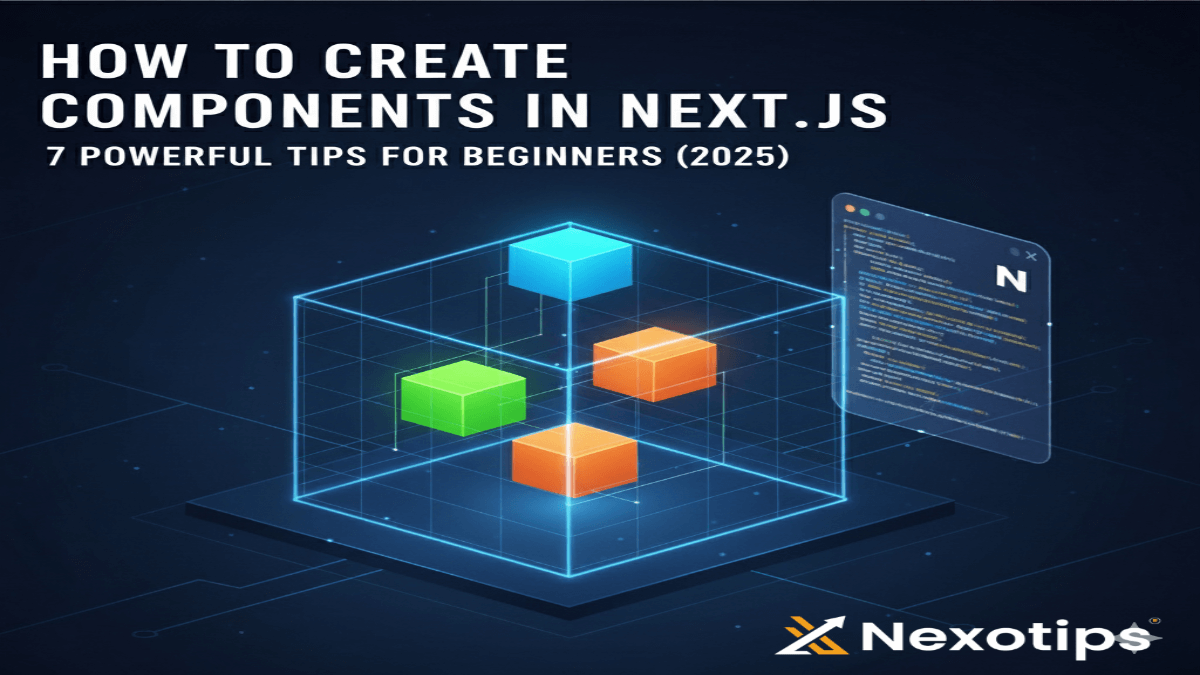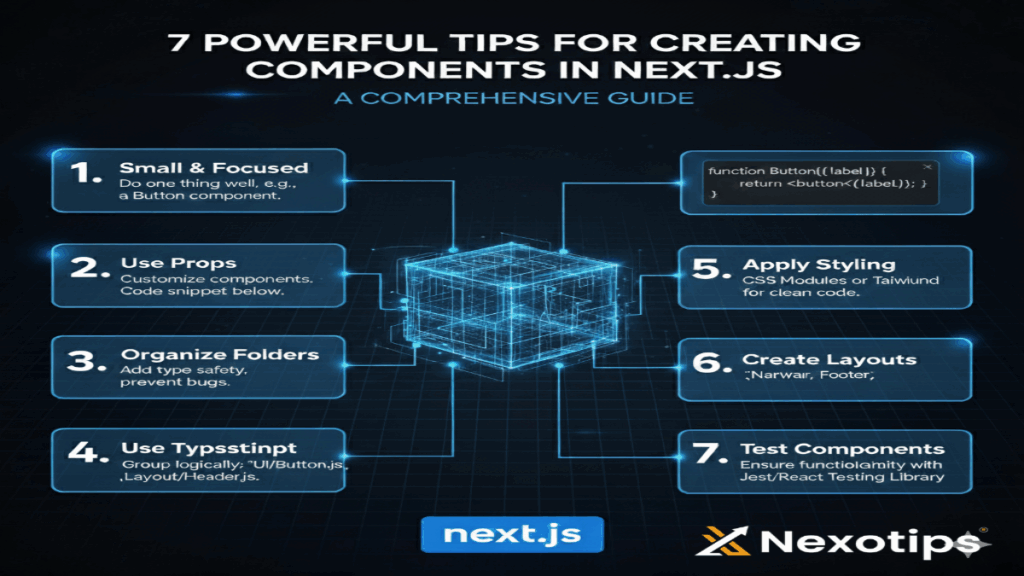
How to Create Component in Next.js: 7 Powerful Tips for Beginners (2025)
How to Create Component in Next.js is an essential skill for beginners. At Nexotips Infotech, we share 7 powerful tips, best practices, and examples to help you master components in 2025. If you’re new to React or Next.js, don’t worry—this guide will make it easy to understand and start building your own components step by step.
Table of Contents
What is a Component in Next.js?

A component in Next.js is a small, reusable piece of UI. For example, a button, header, footer, or card can be a component. Components help you:
- Reuse the same design in multiple pages
- Keep your code clean and organized
- Make changes faster across your project
Think of components as Lego blocks—you can build an entire application by combining them.
Why Components Matter in Next.js
Components are the foundation of modern web development. By learning how to create component in Next.js, you unlock the ability to:
- Write less code while achieving more
- Build faster, more responsive applications
- Improve collaboration between team members
- Enhance maintainability and scalability
At Nexotips Infotech, we use components every day to build professional websites and web applications for clients.
How to Create Your First Component in Next.js

Let’s walk through a simple example. Open your Next.js project and follow these steps:
Step 1: Create a New File
Inside the components folder, create a file called Header.js.
Step 2: Write the Component Code
export default function Header() {
return (
<header>
<h1>Welcome to My Next.js App</h1>
</header>
);
}Step 3: Use the Component
In your app/page.js or pages/index.js, import and use it:
import Header from "../components/Header";
export default function Home() {
return (
<div>
<Header />
<p>This is my first component in Next.js!</p>
</div>
);
}That’s it! You just created your first Next.js component.
7 Powerful Tips for Creating Components in Next.js

1. Keep Components Small and Focused
Each component should do just one thing. For example, a Button component should only handle button-related UI.
2. Use Props for Reusability
Props allow you to customize components. Example:
function Button({ label }) {
return <button>{label}</button>;
}3. Organize Your Components Folder
Create a components folder and group files logically, e.g., UI/Button.js, Layout/Header.js.
4. Use TypeScript for Safer Components
Next.js works well with TypeScript. It helps prevent bugs by checking types.
5. Apply Styling with CSS Modules or Tailwind
Instead of inline styles, use CSS Modules or Tailwind for cleaner code.
6. Create Layout Components
Layout components like Navbar and Footer Make your site consistent.
7. Test Your Components
Use tools like Jest or React Testing Library to ensure your components function as expected.
Best Practices for 2025
- Stick to functional components instead of class components.
- Use React hooks (like
useStateanduseEffect) inside components. - Optimize performance with memoization (
React.memo). - Follow Next.js file structure conventions for easier collaboration.
- Use TypeScript with Next.js for type safety and fewer runtime errors.
- Implement code splitting and lazy loading for faster performance.
Conclusion
Learning how to create components in Next.js is one of the most valuable skills for any beginner developer. By starting small, practicing often, and following the 7 powerful tips shared above, you’ll soon be able to build reusable, scalable, and professional-looking applications.
At Nexotips Infotech, we encourage beginners to focus on writing clean code, reusing components, and following best practices. That’s the foundation of becoming a great Next.js developer in 2025.
Want to learn more? Check out our other coding-related blogs on Nexotips blog.
